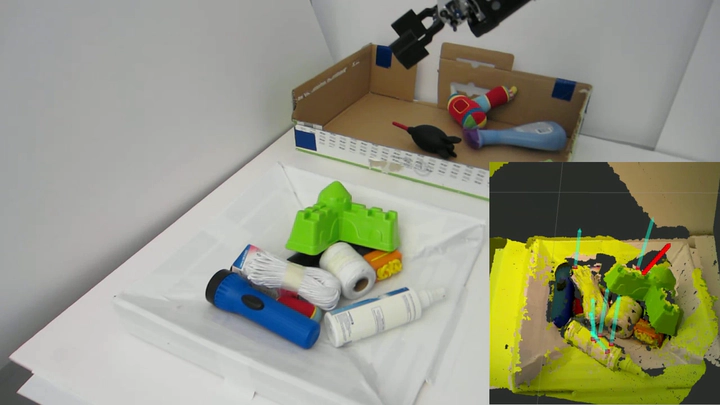
Abstract
This paper proposes a new approach to using machine learning to detect grasp poses on novel objects presented in clutter. The input to our algorithm is a point cloud and the geometric parameters of the robot hand. The output is a set of hand poses that are expected to be good grasps. There are two main contributions. First, we identify a set of necessary conditions on the geometry of a grasp that can be used to generate a set of grasp hypotheses. This helps focus grasp detection away from regions where no grasp can exist. Second, we show how geometric grasp conditions can be used to generate labeled datasets for the purpose of training the machine learning algorithm. This enables us to generate large amounts of training data and it grounds our training labels in grasp mechanics. Overall, our method achieves an average grasp success rate of 88% when grasping novels objects presented in isolation and an average success rate of 73% when grasping novel objects presented in dense clutter. This system is available as a ROS package at http://wiki.ros.org/agile_grasp.